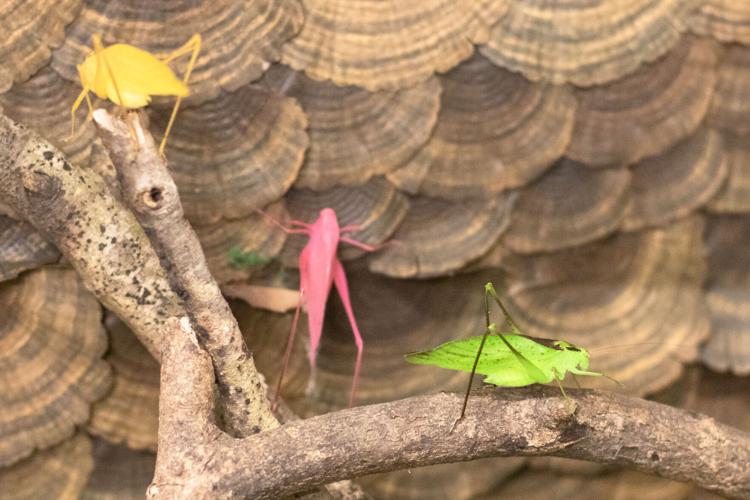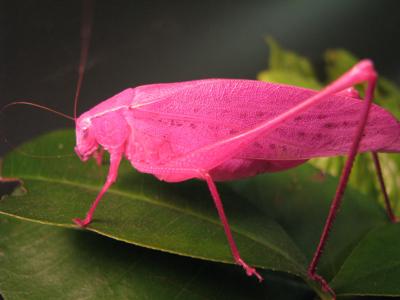A bubblegum-pink bug isn't something you see every day, unless you're the curator of animal collections for Audubon Butterfly Garden and Insectarium, aka Zack Lemann.
This week, the Audubon Insectarium acquired three new pink katydids to add to their collection. The insectarium now has more than 75 of the rare insects.
Named for their unique chirp, the Oblong-winged Katydids you might typically come across in the summer of the Gulf South (or not — they're masters of camouflage) are leaf-green and textured. Their color and shape help them blend in and avoid predators.
Pink katydids, on the other hand, are a little more conspicuous.
"Katydids come in pale gray, peach, tan, yellow and pink variations," said Lemann, an entomologist. "A member of the grasshopper and cricket family, they're beautiful and rare."

Pink, green and yellow Oblong-winged katydids at Audubon Insectarium.
Just how rare is unknown, but it's possible that their bright color contributes to their low numbers.
"Visually hunting predators can find them much more easily, and we don't find many babies," Lemann said. "One thing we can say for certain is that we find adults, and there are not a lot of them."
The three katydids were donated within days of each other from different parts of Louisiana. Historically, the bugs are donated in clusters, but no one knows why, Lemann said.
The bugs join the instectarium's collection. The facility has about 75 pink katydids in its lab for breeding, but they aren't yet in a permanent display. Some of the bugs were born in the lab, and others were donated.

Pink katydids at Audubon Insectarium.
The insectarium welcomes donations of the unusual insects. If you find a pink katydid in your backyard and are quick enough to catch it, Lemann says that the bugs are happy to munch on a leaf of lettuce or some oats until you can bring it to the insectarium.

Zack Lemann is the Audubon Insectarium's bug guru
"The life-span of a katydid is about three to four months in adulthood, and we're trying to keep our colonies flourishing for as long as possible," Lemann said. "We're thankful to all the folks who find and donate these animals."





